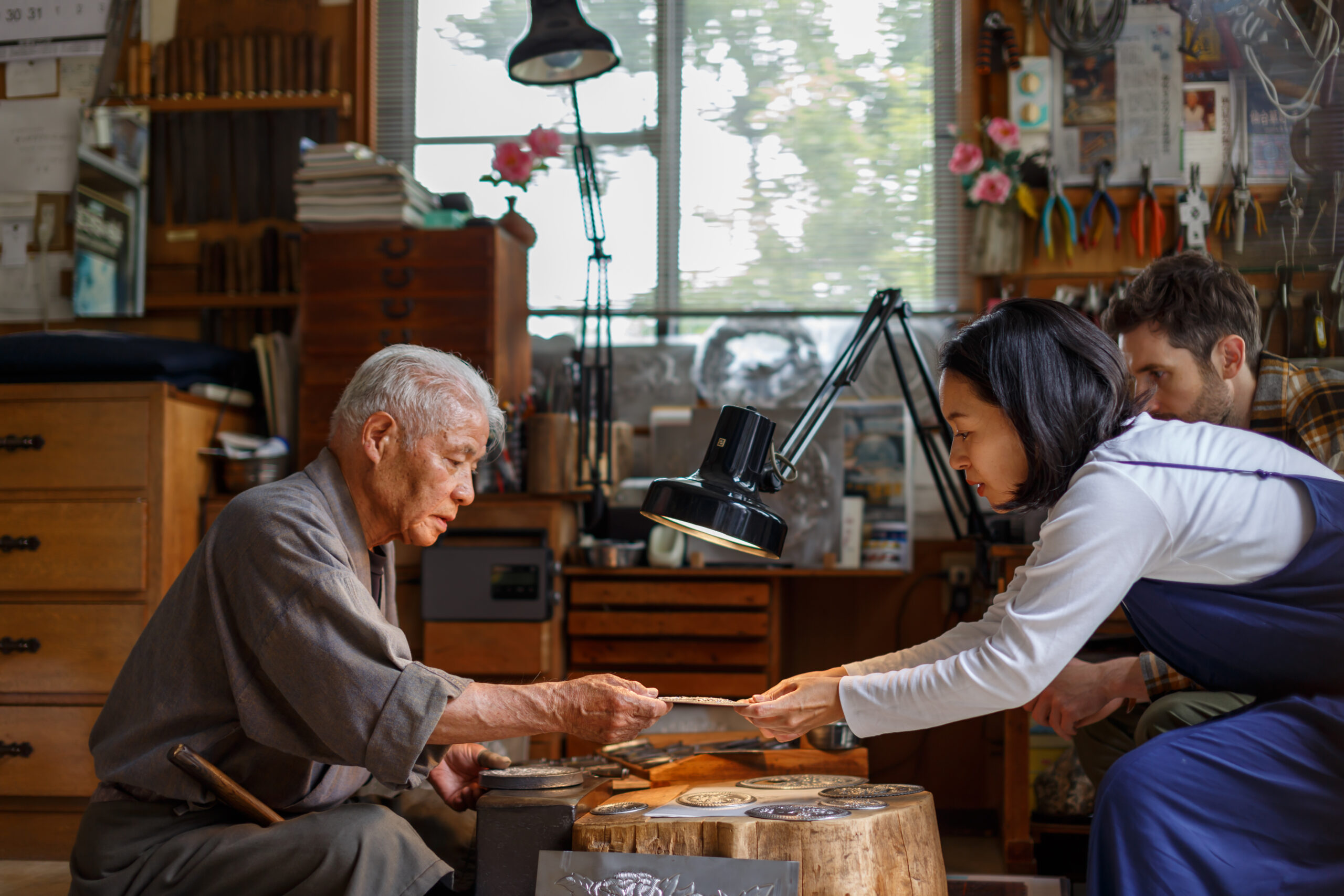- Question for Azusa: As your studio embodies a blend of Japanese and British influences, do you see this project as an opportunity to reconnect with your Asian heritage more deeply?
For me, the Sendai Tansu is a time travel device. I love the feeling of being connected to the past either with antiques or with new objects that are in conversation with history. ‘To stay the same we must always change’ is the famous line from The Leopard.
Our aim was to authentically capture a historical moment when these pieces may have been considered modern. This endeavour involved crafting something that exudes freshness while employing age-old techniques and traditions that traverse the hands of artisans across centuries.
- Question for both: How does the historical legacy of this craft resonate with your own peculiar design ethos?
We often describe ourselves as synthesisers. Our projects are often a collision of different existing elements to make something new. For example, traditional maritime crafts like making a ship stool using a very modern material of marine plastic. In the case of Sendai Tansu it is a combination of 3 heritage crafts, wood joinery, lacquer and hand metal work. 
- How did you navigate the juxtaposition of contemporary design language within the traditional framework of Sendai Tansu while working on the Craft x Tech project?
For us, it was trying to identify the essence of a Sendai Tansu and staying true to that whilst doing something that felt fresh.
We were told that what defines a Sendai Tansu is the three crafts. However, for us, that was not necessarily the essential feeling that standing in front of one gave you. The inherently square and grounded structure bestowed upon it a substantial weight, reminiscent of a treasure chest. This quality enhances the overall impression, suggesting that it cradles something of profound significance—a symbolic hearth for cherished household possessions.
We wanted to evoke the same feeling but with a more minimal timeless modern aesthetic.
- What specific discoveries or unexpected hurdles did you encounter while amalgamating contemporary design principles with the time-honoured techniques of Sendai Tansu?
There is a lot of responsibility involved in working with a 6 generation company, with craftsmen that are national treasures. One wants to make the most of their skill but at the same time not make something that is too ornate in a way that could be too baroque or the Japanese equivalent.
- What specific message or essence do you aim for your design to convey to your audience?
Our design doesn’t aim to convey a specific message but rather elicits a distinct feeling—one that authentically captures the spirit of Sendai Tansu, Japanese aesthetics, and remains true to our affinity for the principles of the Bauhaus movement, Radical Italian Design, and the concept of Metabolism. It’s about evoking a sensory experience that resonates with the cultural roots and design influences we hold dear.
